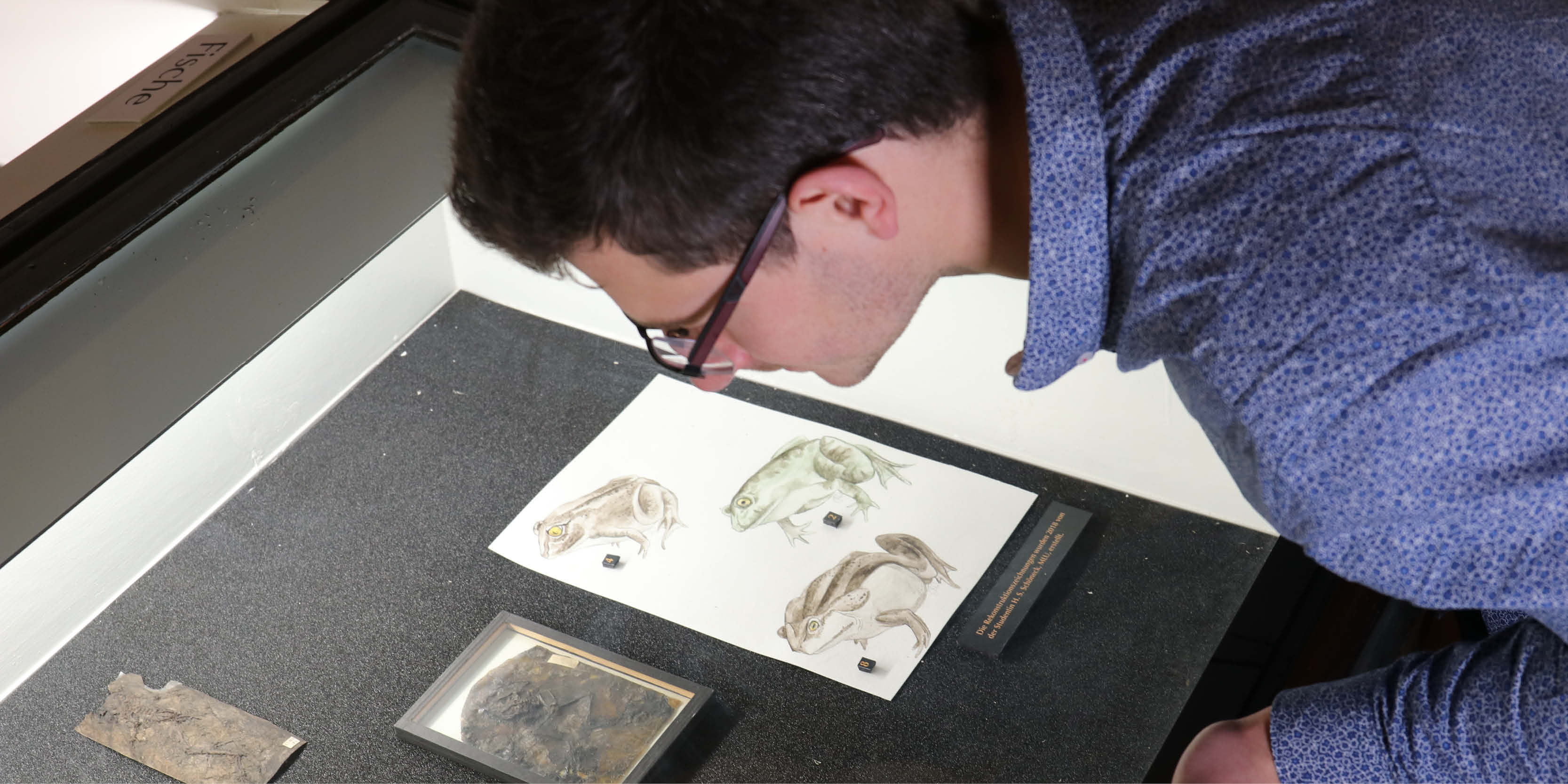In This Section
UCC palaeontologists solve prehistoric frog mystery

A team of scientists led by Daniel Falk and Professor Maria McNamara, School of Biological, Earth and Environmental Sciences (BEES), has solved an ancient mystery to reveal why hundreds of fossil frogs died in an ancient swamp 45 million years ago – it was during mating.
The watery death trap in the Geiseltal area in central Germany claimed the lives of over 50,000 ancient beasts, including birds, horses, bats, fish and hundreds of frogs. Because of its unique geological features and thousands of fossils, the former coalfield of Geiseltal in Saxony-Anhalt, is considered a scientific treasure trove, providing a unique window into how the Earth’s plants and animals evolved over millions of years.
Nearly 50 million years ago – the middle Eocene – the Earth was much warmer and the area of Geiseltal was a swampy subtropical forest whose inhabitants included ancestors of the horse, large crocodiles, as well as giant snakes, lizards, ground-dwelling birds and plenty of anurans, which are frogs and toads.
Previous studies have suggested that the Geiseltal frogs died during the desiccation of lakes and/or oxygen depletion in the water. But exactly what killed these creatures has long been a mystery – until now.
By studying the bones of the fossil frogs, the UCC team was able to narrow down the options.
“As far as we can tell, the fossil frogs were healthy when they died, and the bones don’t show any signs of predators or scavengers – there’s also no evidence that they were washed in during floods, or died because the swamp dried up.” said UCC researcher and study leader Daniel Falk. What’s more, most of the Geiseltal fossil frogs are species that spend their lives on land, returning to the water only to breed. “By process of elimination, the only explanation that makes sense is that they died during mating.”
This phenomenon is common in frogs today. “Female frogs are at higher risk of drowning as they are often submerged by one or more males – this often happens in species that engage in mating congregations during the short explosive breeding season,” said senior author Professor Maria McNamara. “What’s really interesting is that fossil frogs from other sites also show these features, suggesting that the mating behaviours of modern frogs are really quite ancient and have been in place for at least 45 million years”.
These findings are among the first new discoveries to come to light following the reopening of the famous Geiseltal fossil collections of the “Zentralmagazin Naturwissenschaftlicher Sammlungen (ZNS)” in Halle (Saale), Germany to the public. The study is part of a research cooperation between UCC and Martin-Luther-University Halle-Wittenberg with funding from the Irish Research Council. Study results are published today in the journal Papers in Palaeontology.
Study results have been published in the journal Papers in Palaeontology.
School of Biological, Earth and Environmental Sciences
An Scoil Eolaíochtaí Bitheolaíocha, Domhaneolaíocha agus Comhshaoil
Contact us
Distillery Fields, North Mall, University College Cork, Ireland , T23 TK30
